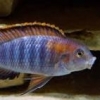Hi,
Had a few odd deaths with similar symptoms over the last 1-2 months I would like a few opinions on.
Tank History
Velvet ~7 months ago
Whitespot ~2-3 months ago (never introducing a new fish again without quarantine)
Tank is stocked predominantly with peacocks and haps.
GH: 180
KH: 120
PH: 8.2
NO2: 0
NO3: 80
NH3: No test
5x2x2 2xEheim 2080's
40 fish
50% weekly water changes, filters are in good order.
Currently ill
Red Peacock
Lake Victorian Cichlid, name escapes me
Symptoms
A fish will eat well the night before. The next day I notice the fish is a bit lethargic and does not attack food with its usual vigour. The fish will occasionally attempt to eat but will spit the food out. The fish physically looks well to begin with, for instance, the Red Peacock was showing stunning colouration for its size before this happened. The fish will show signs of laboured breathing and return to normal breathing soon after. It looks as if the fish is trying to clear something out of its mouth or gills. As the days go by, the fish gets more and more lethargic and the breathing is always laboured until it dies. The fish in this state tend to keep to themselves and will often keep to the quiet areas of the tank or caves. On the odd occasion, I can see the fish trying to scratch the side of its gills.
If I was overfeeding my fish, I assume the Ammonia spike could be taken care of with a water change, however, the fish never get better with water changes. Water changes are completed with Prime.
Any help would be greatly appreciated.
Added picture of unknown Victorian.
https://goo.gl/photo...Ju5jiQeEccu4r96
Edited by Mintox, 18 May 2017 - 12:22 AM.











